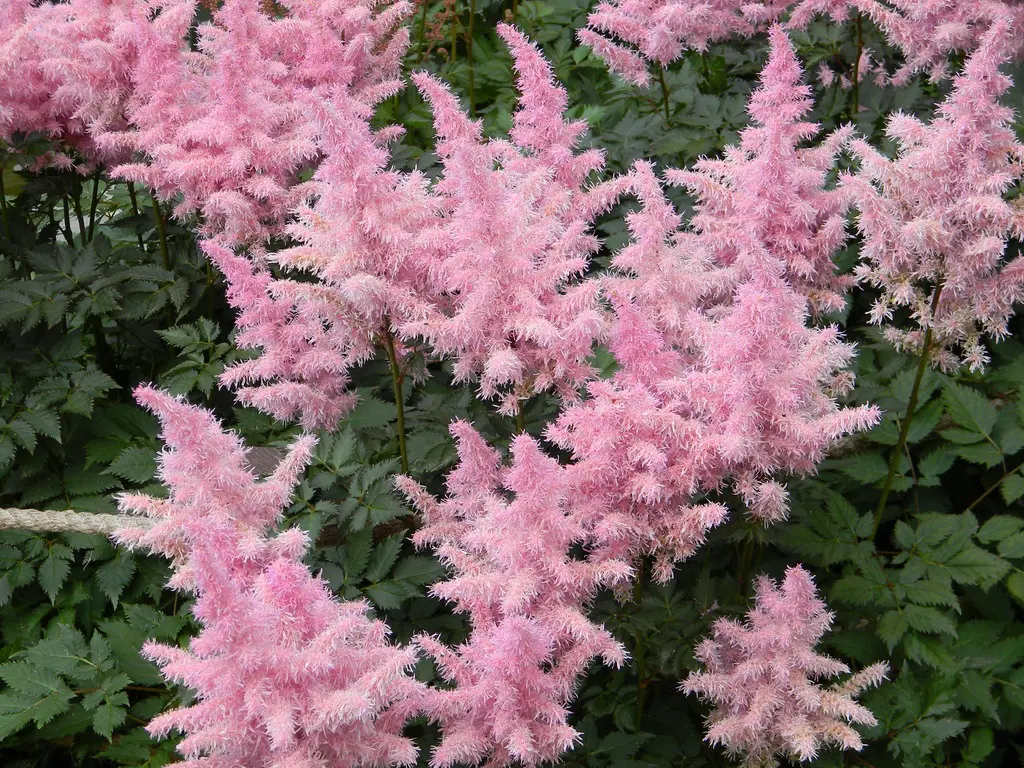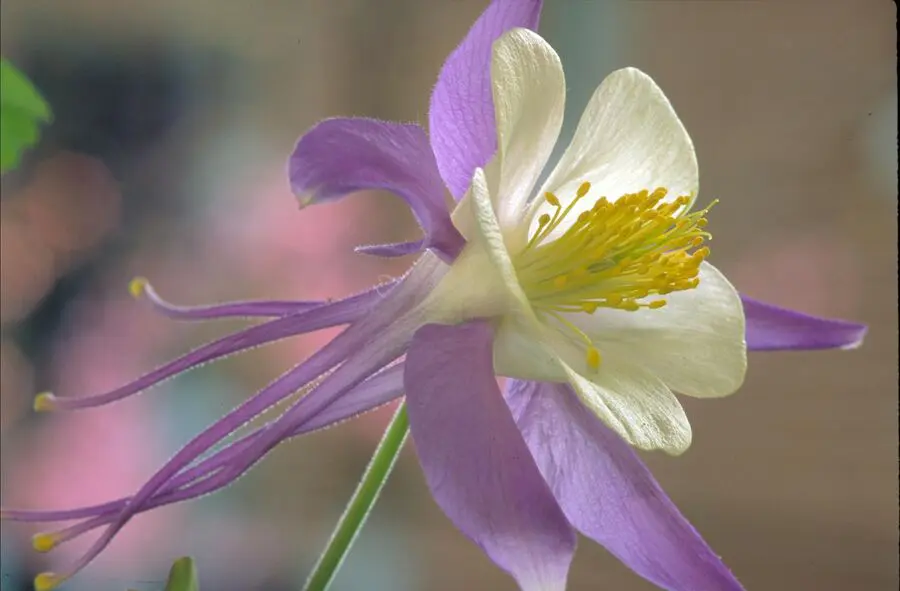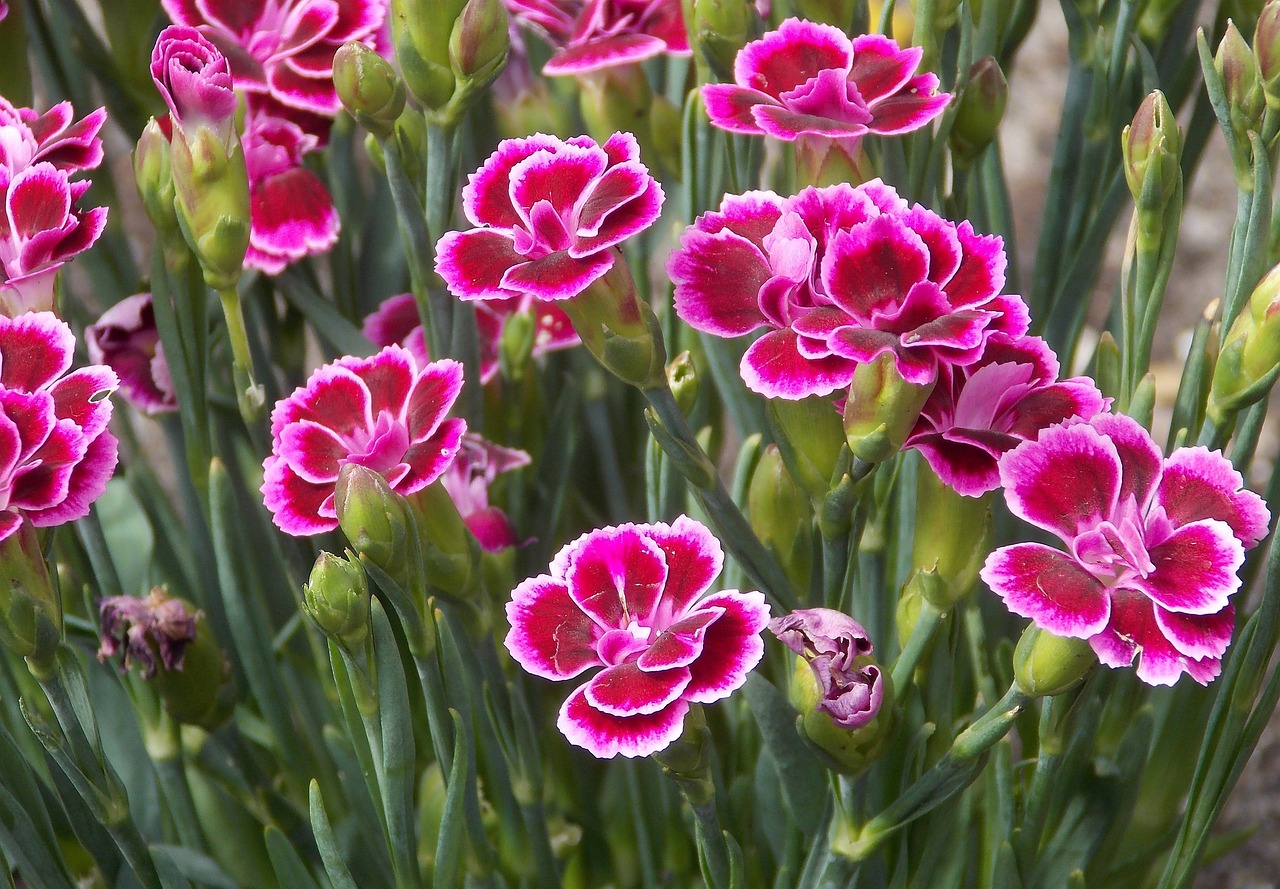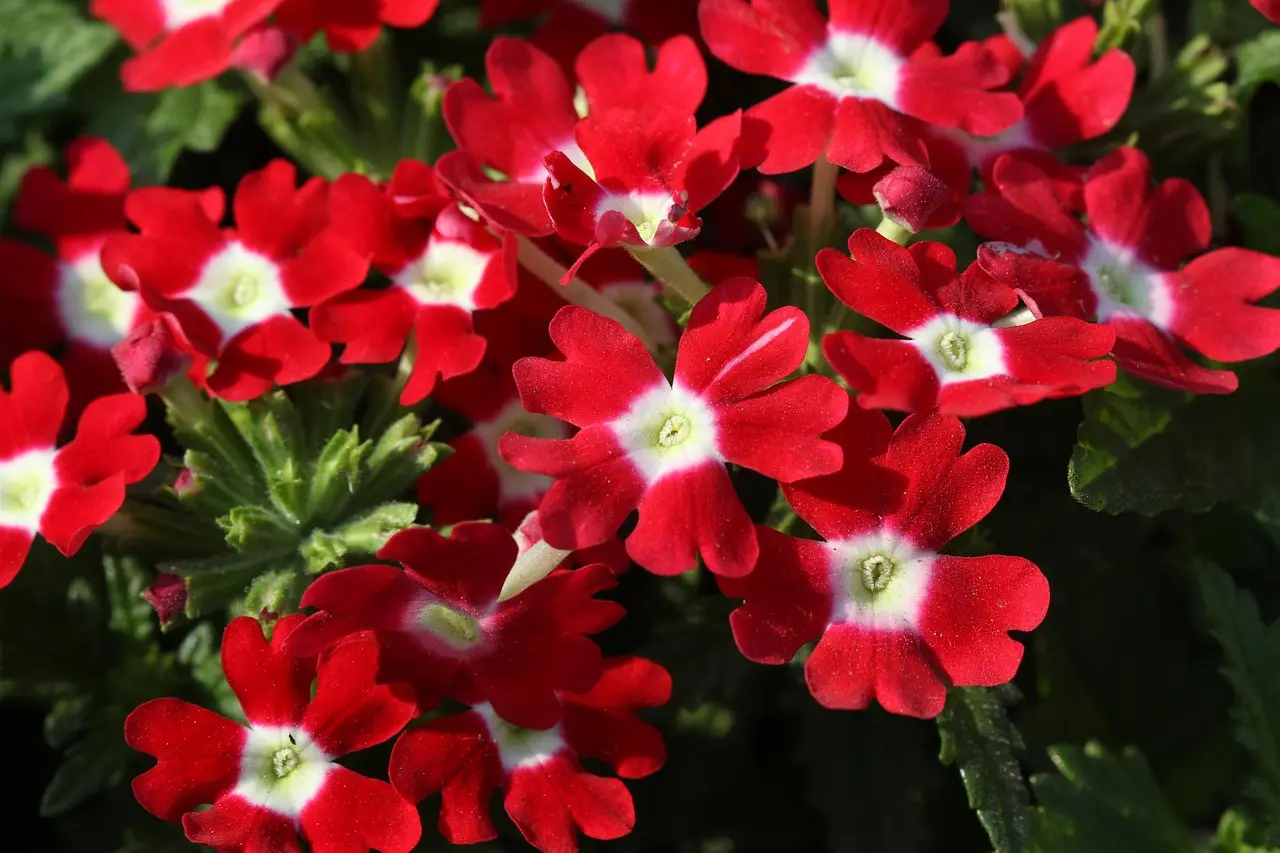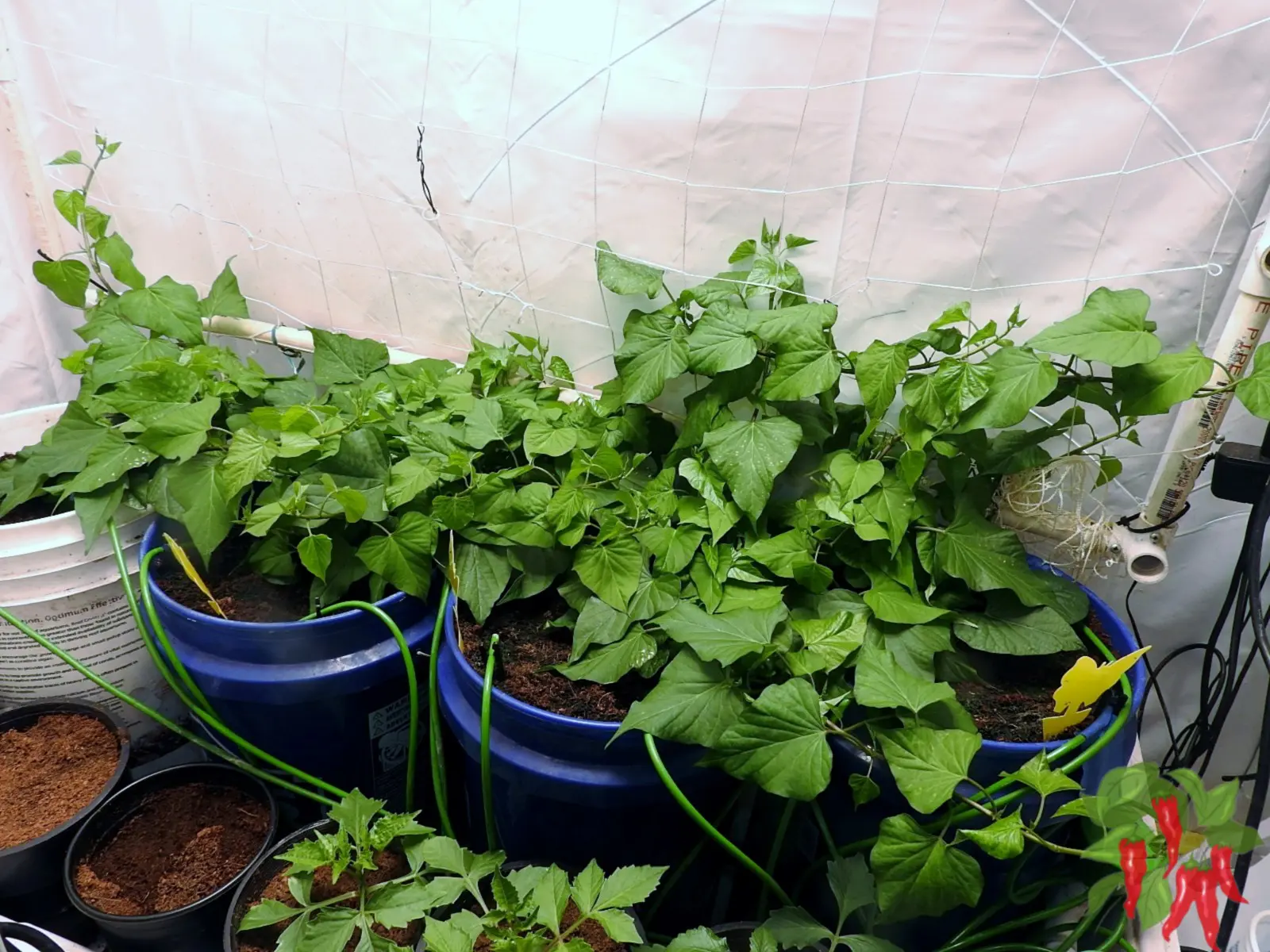This post contains affiliate links. If you buy something from one of our links we may earn a commission. Thanks
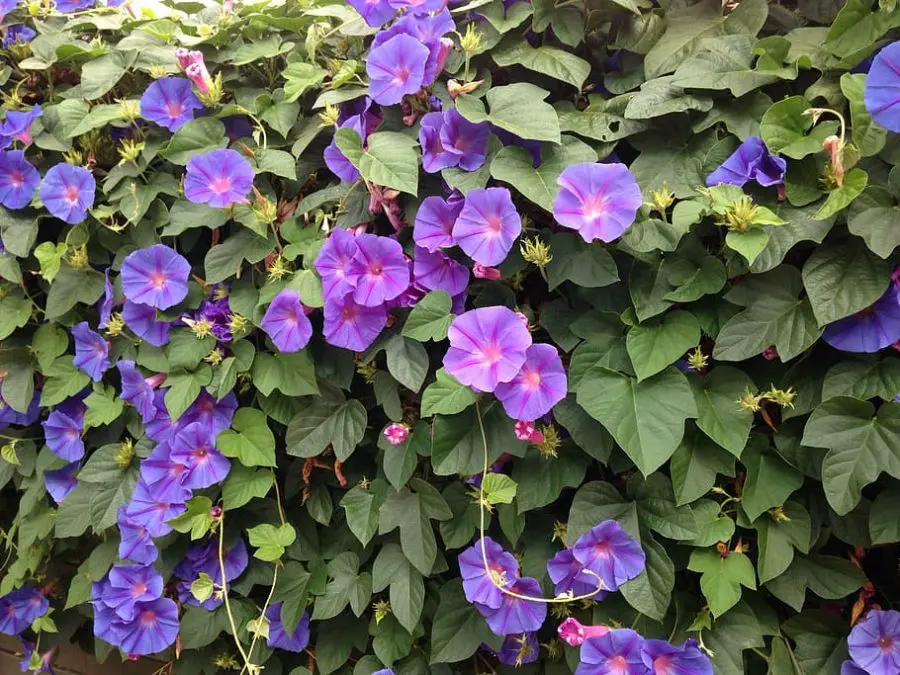
Discover the joy of Morning Glory care in pots with our comprehensive guide. Learn to grow, nurture, and enjoy these vibrant climbers in your own space.
To grow Morning Glory in pots, choose a container that’s at least 12 inches in diameter and has drainage holes. Fill it with well-draining potting soil and plant seeds or young plants. Provide a trellis for the vines to climb. Place the pot in a sunny location and water regularly, keeping the soil consistently moist.
Imagine stepping into your garden or balcony, a cup of coffee in hand, to be greeted by the vibrant hues of Morning Glory flowers blooming in pots.
The sight is truly a morning glory, isn’t it? If you’ve been dreaming of this, you’re in the right place!
Our guide on Morning Glory care in pots is here to turn that dream into a reality.
We’ll walk you through the journey of nurturing these beautiful climbers, right from planting the seeds to seeing them bloom in all their glory. Let’s dive in!
Introduction Morning Glory Care In Pots
Welcome to our comprehensive guide on Morning Glory care in pots! If you’ve ever admired the stunning, trumpet-shaped colorful flowers of Morning Glories and wondered how to cultivate them in your own space, we’ve got you covered.
In this post, we’ll explore everything from the fascinating history of these vibrant climbers to the practical steps of planting and caring for them in pots.
We’ll also delve into dealing with common pests and diseases, winter care, and even propagation. Plus, we’ve included a handy FAQ section to answer your burning questions.
So, whether you’re a seasoned gardener or a beginner looking to add a splash of color to your balcony or patio, this guide is for you. Let’s embark on this gardening adventure together!
What Is Morning Glory
Morning Glory, isn’t that a delightful name? It’s as charming as the flowers themselves!
Morning Glory is a common name for over a thousand species of flowering plants in the family Convolvulaceae.
These Morning Glory plants are known for their vibrant, trumpet-shaped flowers that open in the morning and close by afternoon, hence the name ‘Morning Glory’.
They’re climbers by nature, and with the right support, they can create a beautiful, colorful canopy in your garden or balcony.
Brief Overview of Morning Glory
Morning Glories are native to tropical and subtropical regions, but they’ve made their way into hearts and gardens worldwide.
They’re annuals or perennials, depending on the species and climate. The flowers come in a variety of colors, including blue, purple, pink, white, and even multicolored.
The most common variety, Ipomoea purpurea, is known for its stunning heavenly blue-violet flowers.
But it’s not just about the flowers; the heart-shaped leaves add to the plant’s overall appeal.
Importance of Growing Morning Glory in Pots
Now, you might be wondering, why grow Morning Glory vines in pots?
Well, there are several reasons.
Firstly, growing them in pots allows you to control their growth. These plants are vigorous climbers and can take over your garden if left unchecked.
Pots keep them contained and are an easy way to keep them manageable.
Secondly, pots give you the flexibility to move the plants around, whether for sunlight exposure, aesthetic purposes, or to protect them from harsh weather.
Lastly, if you live in an apartment with limited outdoor space, growing Morning Glory in pots is a great way to bring some nature and color into your home.
Plus, there’s something incredibly satisfying about nurturing a plant and watching it bloom right before your eyes, don’t you think?
Understanding Morning Glory
Before we dive into the practical aspects of growing Morning Glory in pots, let’s take a moment to truly understand this fascinating plant.
After all, knowing your plant well is the first step toward successful gardening.
In this section, we’ll explore the origins and history of Morning Glory, delve into the different varieties, and answer some common questions.
So, are you ready to embark on this botanical journey? Let’s get started!
Origin and History of Morning Glory
Let’s start with a little trip down memory lane. Morning Glories have a rich history that spans continents and cultures.
Native to tropical and subtropical regions of the Americas, these plants were cultivated in Mexico for medicinal and ceremonial purposes as early as the Aztec civilization.
The Japanese also have a long history of cultivating a variety of Morning Glory known as Asagao.
Isn’t it fascinating how a single plant can weave itself into the fabric of different cultures?
Different Varieties of Morning Glory
Morning Glory is a bit of a globetrotter, with over a thousand species spread across the world.
The most common variety is the Ipomoea purpurea, known for its iconic blue-violet flowers.
Then there’s the Ipomoea alba, or the moonflower, which blooms in the evening instead of the morning.
If you’re looking for something a bit different, the Ipomoea lobata, also known as the Spanish flag, boasts a cascade of red, orange, and yellow flowers.
With so many varieties, there’s a Morning Glory to suit every garden and every gardener!
Are Morning Glories Perennials
The perennial or annual nature of Morning Glories depends on the species and the climate.
In warmer regions, many Morning Glories grow as perennials, returning year after year.
In colder climates, they are often grown as annuals. But don’t worry, even as annuals, they put on a spectacular show during their growing season.
Morning Glory Plant Size
As for the size, Morning Glories are climbers that can reach heights of 6 to 10 feet, or even more, given the right support.
Their spread can be around 3 to 6 feet. However, when grown in pots, their size can be controlled through pruning and the size of the container.
So, whether you have a spacious garden or a cozy balcony, there’s always room for a Morning Glory!
Is Morning Glory Invasive?
Field bindweed (Convolvulus arvensis) often mistaken for Morning Glory, is a perennial fast-growing vine that’s considered invasive in many parts of the world.
It’s known for its aggressive growth and resilience, making it a challenge to control.
Similarly, some species of Morning Glory, with their rapid growth and self-seeding habit, can also become invasive, particularly in favorable conditions.
They can quickly take over gardens and natural areas, outcompeting native plants.
It’s important to manage their growth and prevent them from spreading uncontrollably.
Growing Morning Glory in pots is one way to enjoy their beauty while keeping their invasiveness in check.
Preparing for Planting
Alright, now that we’ve gotten to know Morning Glory a bit better, it’s time to roll up our sleeves and get our hands a little dirty.
But don’t worry, it’s all part of the fun! In this section, we’ll discuss how to prepare for planting Morning Glory in pots.
We’ll talk about choosing the right container, preparing the soil, and the importance of a support system.
Consider this your pre-planting checklist. Let’s get started, shall we?
Morning Glory Container Size
Choosing the right container is crucial for the healthy growth of your Morning Glory.
These plants love to stretch their roots, so you’ll need a pot that’s deep enough to accommodate them.
A pot that’s about 8 to 12 inches in depth and width should do the trick.
Remember, the pot should also have drainage holes to prevent waterlogging.
If you’re planning to grow Morning Glory in a hanging basket, make sure it’s sturdy enough to support the weight of the plant and the soil.
Preparing the Soil
Morning Glories aren’t too fussy about the soil, but they do prefer well-drained soil.
A light, loamy soil works best. You can prepare your own mix by combining garden soil, compost, and a bit of sand.
The compost will provide the nutrients, while the sand will improve drainage.
Make sure the soil is loose and not compacted, as Morning Glory roots need room to grow.
Coco Coir and Perlite
Speaking of soil, let’s talk about coco coir and perlite.
Coco coir, made from the husk of coconuts, is a fantastic soil amendment that improves soil structure and water retention.
Perlite, on the other hand, is a type of volcanic glass that’s great for improving drainage and aeration.
A soil mix with coco coir and perlite can provide the perfect balance of moisture retention and drainage for your Morning Glory.
Importance of a Support System
Morning Glories are a climbing vine, and they’ll need something to climb on.
This is where a support system comes in. It could be a trellis, a fence, or even a few sturdy sticks.
The support system should be installed in the pot at the time of planting.
It not only gives the plant direction for growth but also adds an extra layer of aesthetic appeal.
Imagine your Morning Glory, in all its colorful glory, climbing up a beautiful trellis. Sounds lovely, doesn’t it?
Planting Morning Glory in Pots
Are you ready to bring your Morning Glory to life? Great! In this section, we’ll guide you through the process of planting Morning Glory in pots.
From sowing the seeds to ensuring successful germination, we’ve got you covered.
And remember, gardening is not just about the end result. It’s about enjoying the process, learning along the way, and of course, the anticipation of seeing the first sprout emerge from the soil.
So, let’s embark on this exciting phase of our Morning Glory journey!
Step-by-Step Guide to Planting Morning Glory Seeds
• Start by soaking your Morning Glory seeds in warm water for 24 hours. This softens the hard seed coat and speeds up germination.
• Fill your pot with the prepared soil mix, leaving about an inch from the top.
• Plant the seeds about 1/4 inch deep into the soil. If you’re planting multiple seeds, space them about 6 inches apart.
• Water the soil thoroughly, but be careful not to wash away the seeds.
• Place the pot in a location that receives plenty of sunlight.
• Keep the soil moist but not waterlogged. In about a week or two, you should see the first sprouts!
Tips for Successful Germination
Temperature plays a crucial role in Morning Glory germination. These seeds prefer warm temperatures, around 70°F.
If you’re starting in the early spring, your plants will have a head start and you might want to keep the pot indoors or use a heat mat to maintain the temperature for best results.
Also, remember to keep the soil consistently moist, as dry soil can hinder germination.
Set your pots outdoors after the last frost date.
Morning Glory in Hanging Basket
Morning Glory in a hanging basket is a sight to behold! The process is the same as planting in a regular pot but with a few tweaks.
Make sure the basket is sturdy and has good drainage. You’ll also need a strong hook or chain to hang the basket.
Once the seeds are planted, hang the basket in a sunny spot. As the plant grows, the vines will cascade down the sides of the basket, creating a beautiful, blooming waterfall.
Just ensure the basket is hung at a height that allows you to water and care for the plant easily.
Morning Glory care
Now that your Morning Glory seeds are snug in their pots, it’s time to focus on their care.
Just like us, plants too need a bit of TLC to thrive. In this section, we’ll discuss the various aspects of Morning Glory care, from watering and sunlight requirements to fertilization and maintenance.
Don’t worry, though, Morning Glories are quite low-maintenance and forgiving, perfect for both seasoned gardeners and beginners.
So, let’s dive into the world of Morning Glory care!
Watering Requirements
When it comes to watering, Morning Glories like a bit of balance. They prefer the soil to be consistently moist, but not waterlogged.
Overwatering can lead to root rot while underwatering can stress the plant. A good rule of thumb is to water when the top inch of soil feels dry to the touch.
In hot, dry weather, you might need to water more frequently.
Just remember, it’s better to water deeply and less frequently than to give small amounts of water often.
Sunlight Requirements
Morning Glories are sun worshippers! They thrive in full sun, meaning they need at least six hours of direct sunlight each day.
The more sun they get, the more they bloom. If you’re growing Morning Glory indoors or on a shaded balcony, place the pot near a sunny window or use grow lights to supplement the sunlight.
Fertilizer Needs
While Morning Glories aren’t heavy feeders, they do appreciate a bit of feeding.
A balanced, slow-release fertilizer applied at the time of planting can provide the nutrients the plant needs.
Try to find a low-nitrogen fertilizer that will encourage blooming and help keep the vines more manageable.
You can also add a layer of compost to the top of the soil every month during the growing season.
However, be careful not to over-fertilize, as this can lead to more leaves and fewer flowers.
Pruning and Maintenance
Pruning is an essential part of Morning Glory care. Regular pruning encourages bushier growth and more blooms.
It also helps control the size of the plant, especially important when growing in pots.
You can pinch off the tips of the vines when they’re about a foot long to encourage branching.
Also, don’t forget to remove faded or dead flowers to keep the plant looking fresh and vibrant.
With these care tips, your Morning Glory will be the star of your garden or balcony!
Dealing with Pests and Diseases
Like all plants, Morning Glories can sometimes attract unwanted guests or fall prey to diseases. But don’t let that deter you!
With a bit of knowledge and proactive care, you can keep your Morning Glory healthy and thriving.
In this section, we’ll discuss the common pests and diseases that affect Morning Glory and share some effective prevention and treatment methods.
Remember, a healthy plant is the best defense against pests and diseases, so let’s learn how to keep our Morning Glories in top shape!
Common Pests and Diseases
Even with the best care, Morning Glories can sometimes face issues with pests and diseases.
The most common pests that bother Morning Glories are aphids, spider mites, and leaf miners.
Aphids and spider mites suck the sap from the plant, causing yellowing and curling of leaves. Leaf miners, on the other hand, create winding trails on the leaves.
As for diseases, Morning Glories can be affected by fungal diseases like leaf spot and rust, especially in humid conditions.
These diseases cause spots on the leaves and can lead to leaf drop if not treated.
Prevention and Treatment Methods
Prevention is always better than cure, especially when it comes to plant health.
Regularly inspect your Morning Glory for signs of pests or diseases.
Ensure the plant has good air circulation and avoid wetting the leaves while watering to prevent fungal diseases.
If you notice aphids or spider mites, you can often control them by spraying the plant with a strong jet of water or using insecticidal soap or neem oil.
For severe infestations, you might need to use a suitable pesticide.
Leaf miners can be a bit tricky to control since the larvae are inside the leaf. The best method is to remove and dispose of affected leaves.
For fungal diseases, remove and dispose of affected leaves and apply a suitable fungicide.
Remember, it’s important to treat any issues as soon as you notice them to prevent them from spreading or causing severe damage to the plant.
With these prevention and treatment methods, your Morning Glory will be well-equipped to deal with any pests or diseases that come its way!
Winter Care for Morning Glory
As the seasons change and winter approaches, you might be wondering how to care for your Morning Glory in the colder months.
After all, these tropical beauties are used to warmer climates. But don’t worry, with a bit of preparation and care, your Morning Glory can weather the winter just fine.
In this section, we’ll discuss how to prepare your Morning Glory for winter and share some tips for indoor care.
So, grab a warm cup of cocoa and let’s talk about winter care for Morning Glory!
Preparing Morning Glory for Winter
As winter approaches, it’s time to prepare your Morning Glory for the colder weather.
If you live in a region where the winters are mild, your Morning Glory might continue to bloom, although not as profusely as in the warmer months.
In this case, simply reduce watering and protect the plant from frost.
If you live in a region with harsh winters, you might need to bring your Morning Glory indoors.
Before the first frost, prune the plant back to about a third of its size. This makes it easier to move and also encourages new growth in spring.
Once indoors, place the plant near a sunny window and reduce watering.
Indoor Care Tips
Indoor care for Morning Glory is quite straightforward. The plant will need plenty of sunlight, so a south-facing window is ideal.
If you don’t have enough natural light, you can supplement with grow lights.
Watering should be reduced in winter. Wait until the top inch of soil is dry before watering.
Overwatering can lead to root rot, especially in lower light conditions.
Even indoors, Morning Glory can grow quite vigorously. You might need to prune the plant occasionally to keep it in check.
Also, rotate the pot every week or so to ensure even growth.
With these care tips, your Morning Glory will be able to enjoy a cozy winter indoors and be ready to burst into bloom Place it back outdoors after the last spring frost when spring finally arrives!
Propagating Morning Glory
Have you fallen in love with Morning Glory and want to have more of these beauties in your garden or home?
Or perhaps you’d like to share the joy of growing Morning Glory with a friend? Well, you’re in luck!
Morning Glory can be easily propagated, allowing you to multiply your plants without buying new ones. In this section, we’ll discuss when and how to propagate Morning Glory and share some tips for successful propagation.
Ready to create a Morning Glory nursery? Let’s get started!
When and How to Propagate Morning Glory
The best time to propagate Morning Glory is in the spring when the plant is actively growing.
There are two main methods of propagation: seeds and stem cuttings.
Both methods have their advantages, and the choice often depends on what’s more convenient for you.
Seeds
Morning Glory seeds are easy to collect and sow. The seeds are enclosed in round pods that form after the flowers fade.
Once the pods dry and turn brown, you can collect the seeds for propagation.
Step-by-Step Instructions for Growing from Seeds
• Start by soaking the seeds in warm water for 24 hours to soften the hard seed coat.
• Fill a pot with a well-draining soil mix and sow seed about 1/4 inch deep.
• Water the soil thoroughly and place the pot in a warm, sunny location.
• Keep the soil moist but not waterlogged. The seeds should germinate in a week or two.
Stem Cuttings
Propagating Morning Glory from stem cuttings is another effective method.
This method is especially useful if you want to propagate a specific variety or color that might not come true from seeds.
Step-by-Step Instructions for Growing from Cuttings
• Choose a healthy, vigorous stem and cut a 4-6 inch section just below a leaf node.
• Remove the leaves from the lower half of the cutting.
Dip the cut end in rooting hormone to encourage root formation.
• Plant the cutting in a pot filled with a well-draining soil mix.
• Keep the soil moist and place the pot in a warm location with indirect light.
• In a few weeks, the cutting should develop roots and can be transplanted to a larger pot or the garden.
Tips for Successful Propagation
Whether you’re propagating from seeds or cuttings, there are a few tips that can increase your success rate.
Always use fresh, healthy material for propagation. This means mature seeds or vigorous, disease-free stems.
Maintain the right conditions for germination or rooting. This includes warmth, light, and moisture.
Be patient. Propagation takes time, and it’s important not to disturb the seeds or cuttings while they’re developing roots.
Finally, remember to enjoy the process. Propagation is a wonderful way to deepen your connection with plants and witness the miracle of growth and life. Happy propagating!
Morning Glory Care In Pots FAQs
Throughout our journey with Morning Glory, you might have gathered a few questions. And you’re not alone!
Many gardeners have queries when it comes to caring for these vibrant climbers.
In this section, we’ve compiled some of the most frequently asked questions about Morning Glory care in pots.
Let’s clear up those gardening mysteries together!
Q: How do you care for potted morning glories?
A: Caring for potted Morning Glories involves providing them with plenty of sunlight, regular watering, and occasional feeding.
They also need a support system to climb on. Regular pruning can help control their growth and encourage more blooms.
Q: Does morning glory grow well in pots?
A: Absolutely! Morning Glories can thrive in pots, provided they have enough depth for their roots to grow.
Growing them in pots also allows you to control their vigorous growth and move them around as needed for sunlight exposure or aesthetic purposes.
Q: What do you do with potted morning glory in winter?
A: If you live in a region with mild winters, simply reduce watering and protect the plant from frost.
In regions with harsh winters, it’s best to bring your Morning Glory indoors in late summer before the first frost.
Once indoors, place the plant near a sunny window and reduce watering.
Q: How often do you water morning glories in pots?
A: Morning Glories prefer the soil to be consistently moist, but not waterlogged. A good rule of thumb is to water when the top inch of soil feels dry to the touch.
In hot, dry weather, you might need to water more frequently. Just remember, it’s better to water deeply and less frequently than to give small amounts of water often.
Morning Glory Care In Pots Final Thoughts
As we reach the end of our comprehensive guide on Morning Glory care in pots, we hope you’re feeling inspired and equipped to embark on your own Morning Glory journey.
From understanding the plant’s history and varieties to planting, caring, and even propagating, we’ve covered a lot of ground together.
But remember, gardening is a continuous learning process, and each plant can teach us something new.
So, let’s recap the key points and encourage you to take the next step in your gardening adventure!
Recap of the Importance of Proper Care for Morning Glory in Pots
We’ve learned that Morning Glory, with its vibrant blooms and vigorous growth, can be a delightful addition to any garden or balcony.
But to truly let it shine, proper care is essential. This includes choosing the right container and soil, providing ample sunlight and water, feeding occasionally, and regular pruning.
Winter care and pest and disease management are also crucial to keep your Morning Glory healthy throughout the year.
And let’s not forget propagation, a wonderful way to multiply your Morning Glory collection or share it with others.
Encouragement for the Reader to Try Growing Morning Glory in Pots
Now that you’re equipped with all this knowledge, we encourage you to try growing Morning Glory in pots.
Whether you’re a seasoned gardener or a beginner, Morning Glory is a joy to grow. It’s not just about the beautiful flowers or the lush vines, but also about the process itself.
The anticipation of the first sprout, the joy of the first bloom, the satisfaction of a healthy, thriving plant, these are experiences that enrich our lives in subtle yet profound ways.
So go ahead, and give Morning Glory a spot in your garden or home. We’re sure it’ll bring you much joy and satisfaction. Happy gardening!
Read more: Backyard Gardening Ideas










